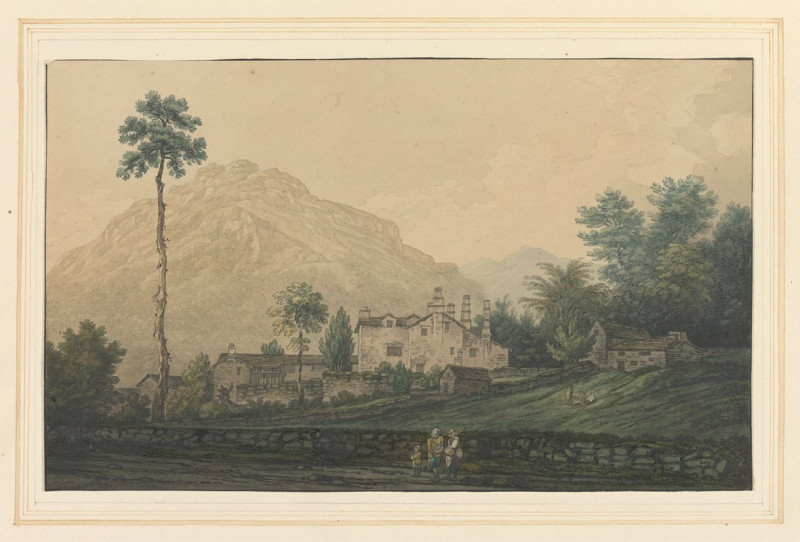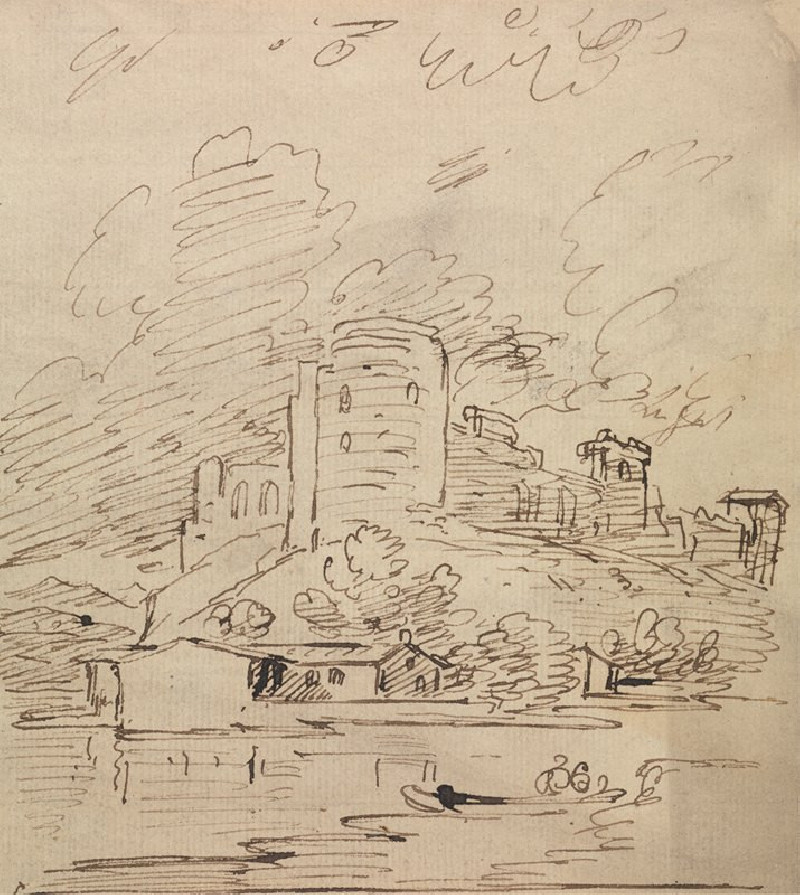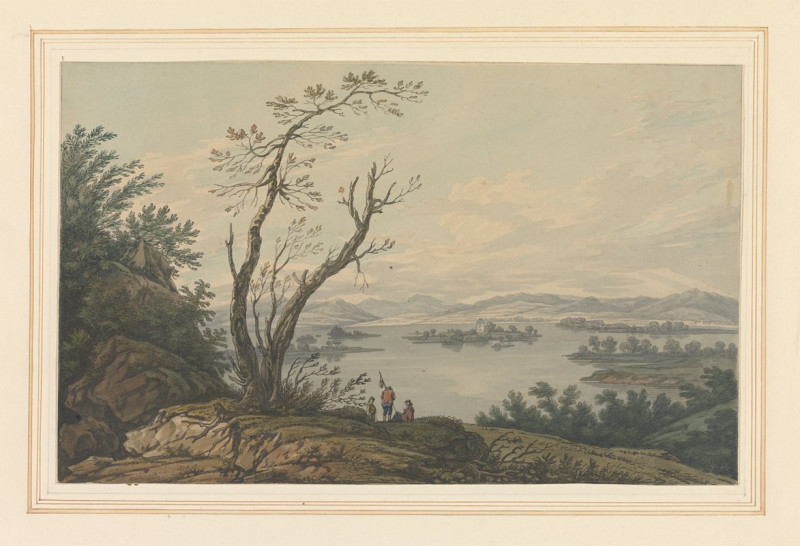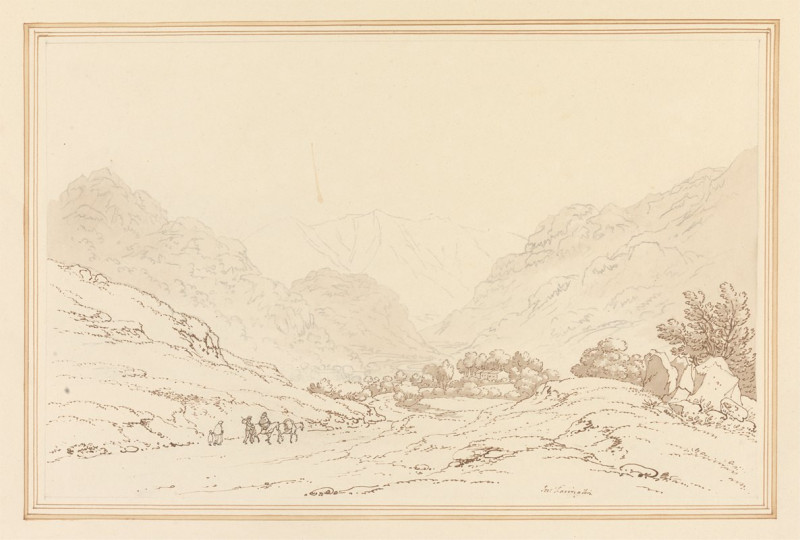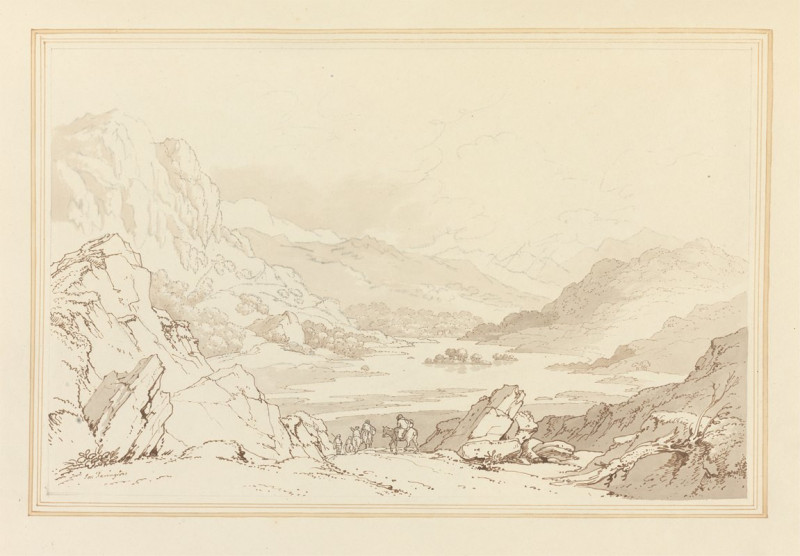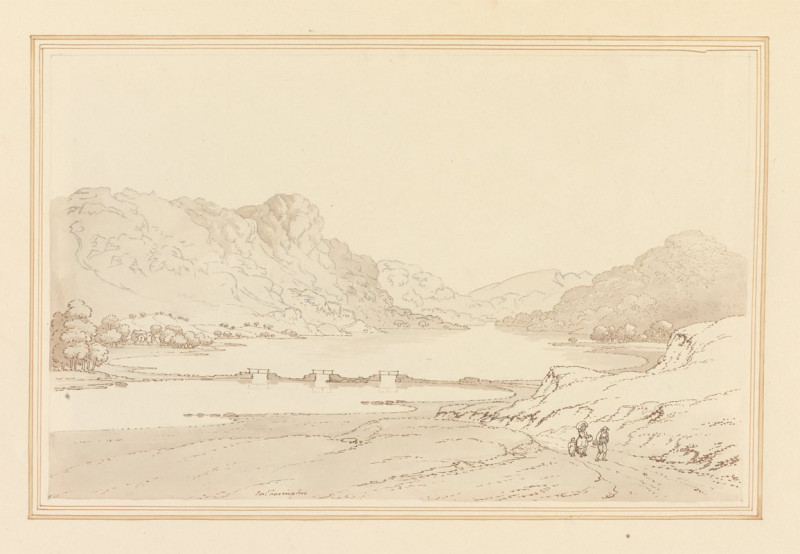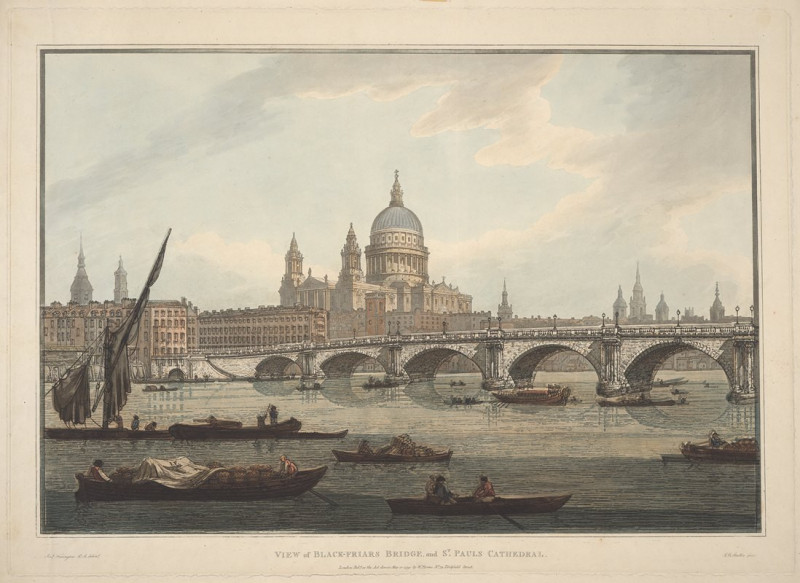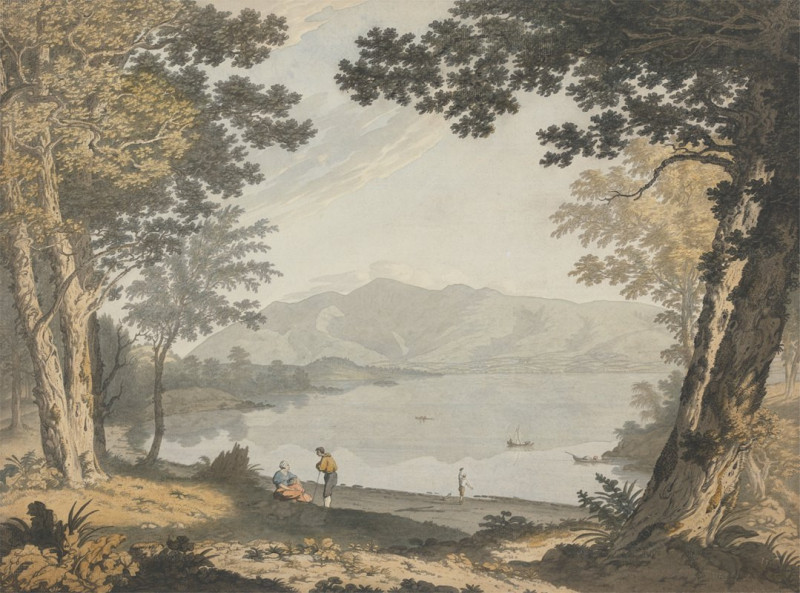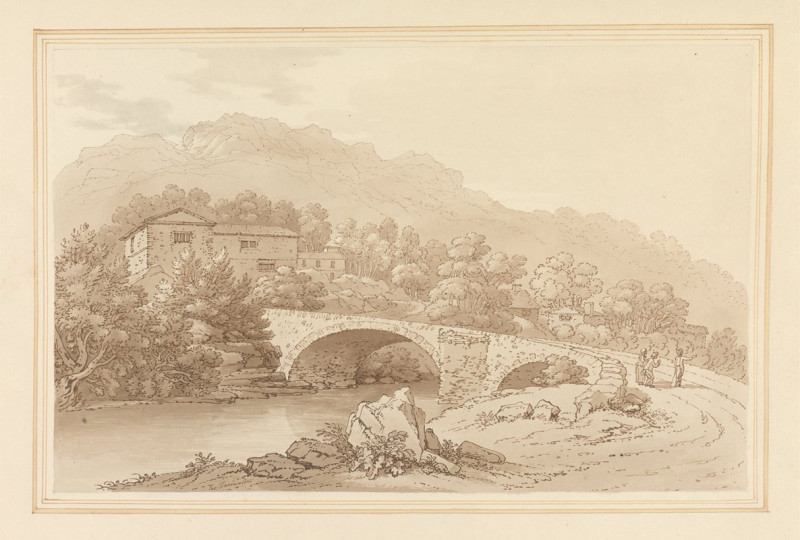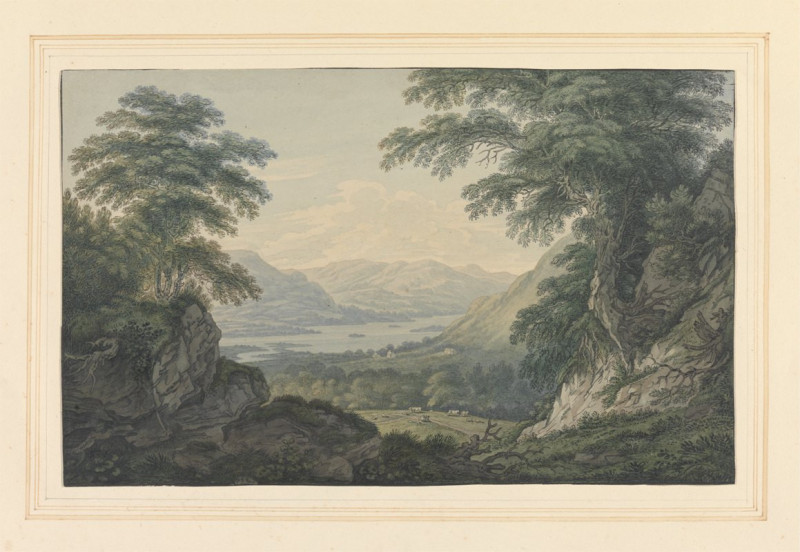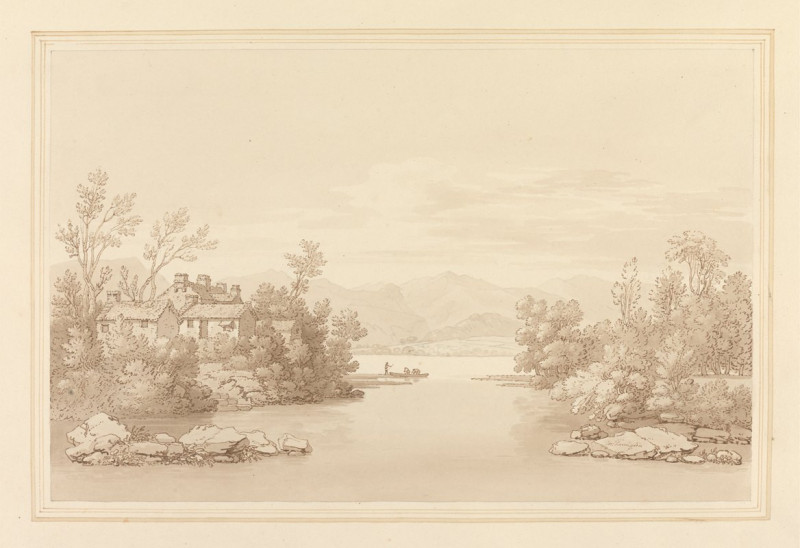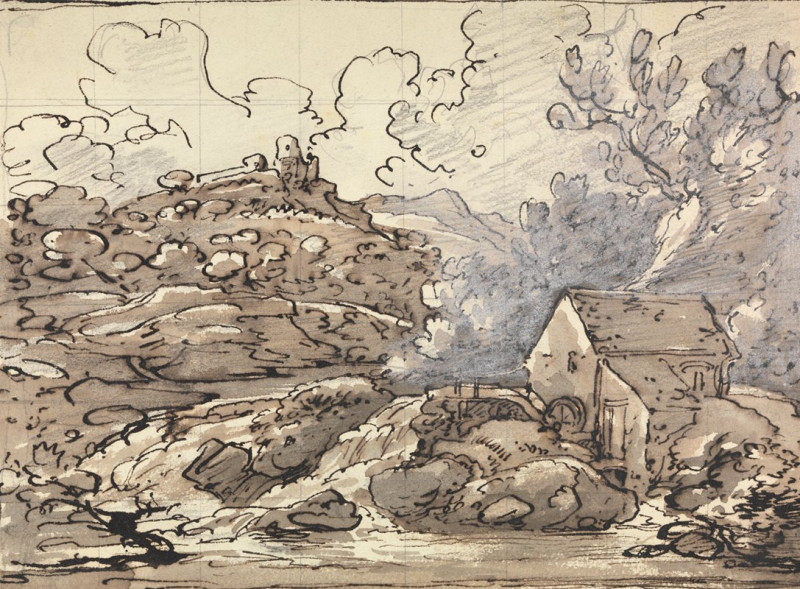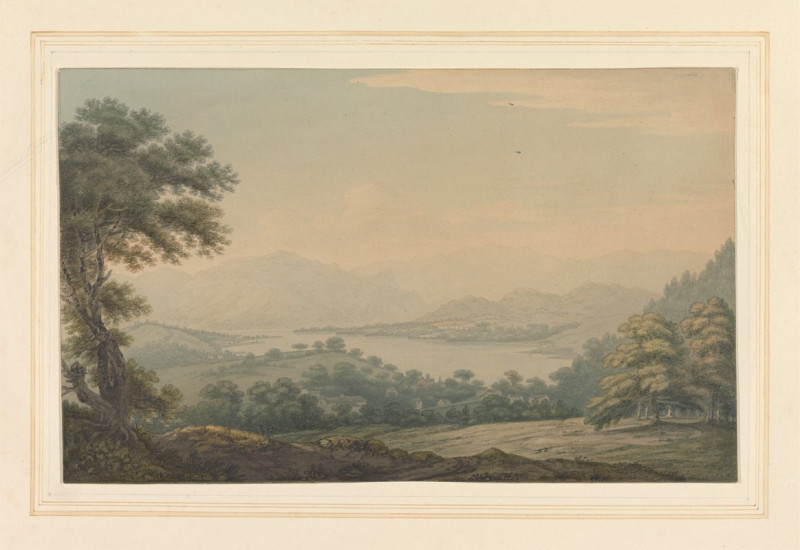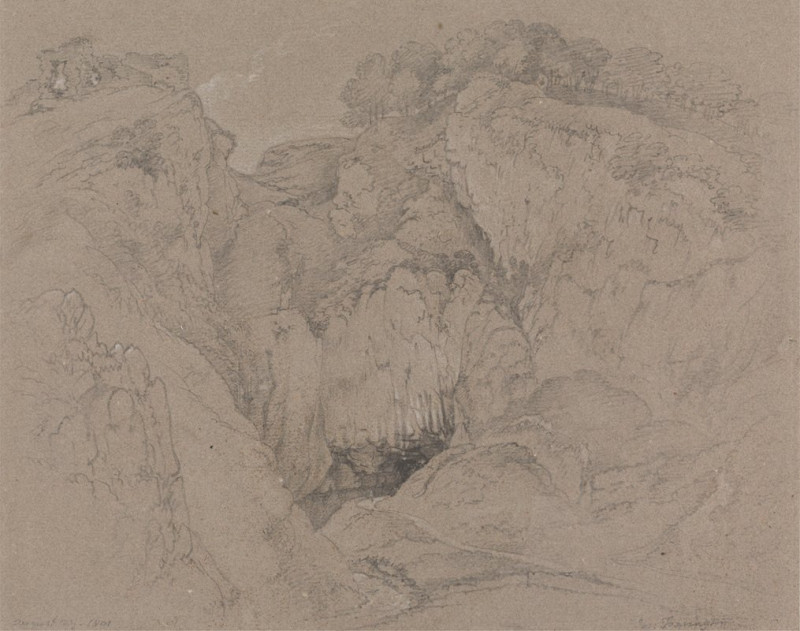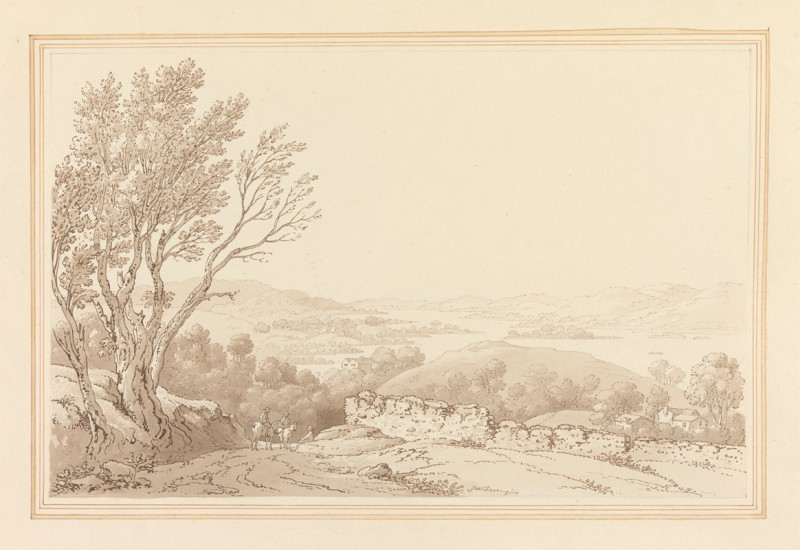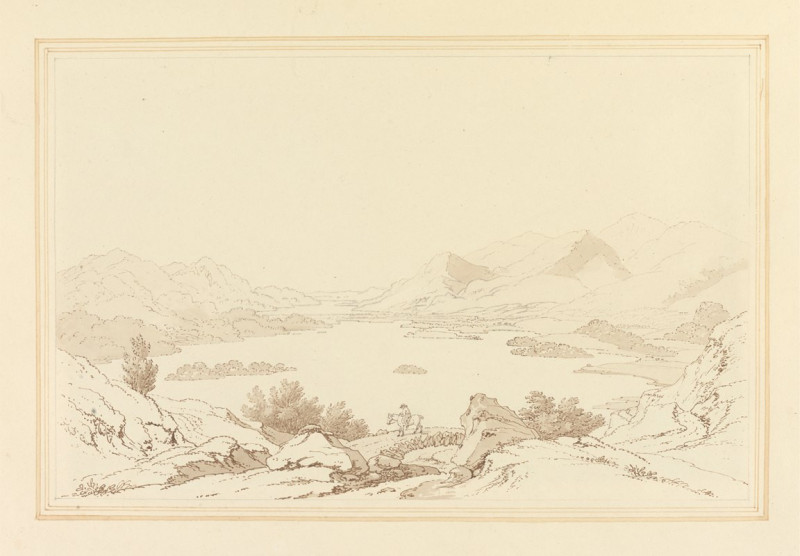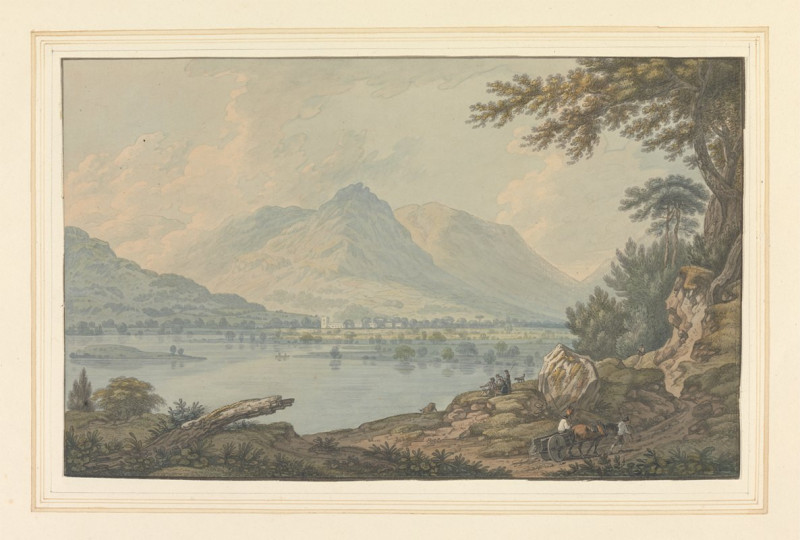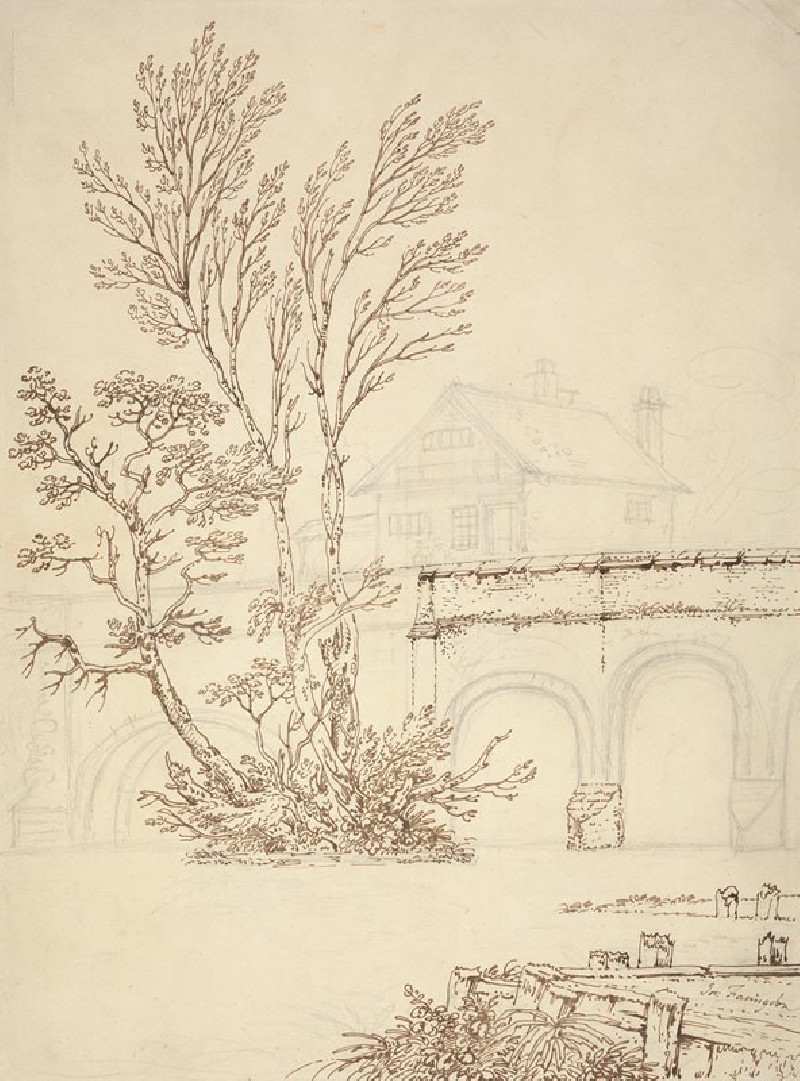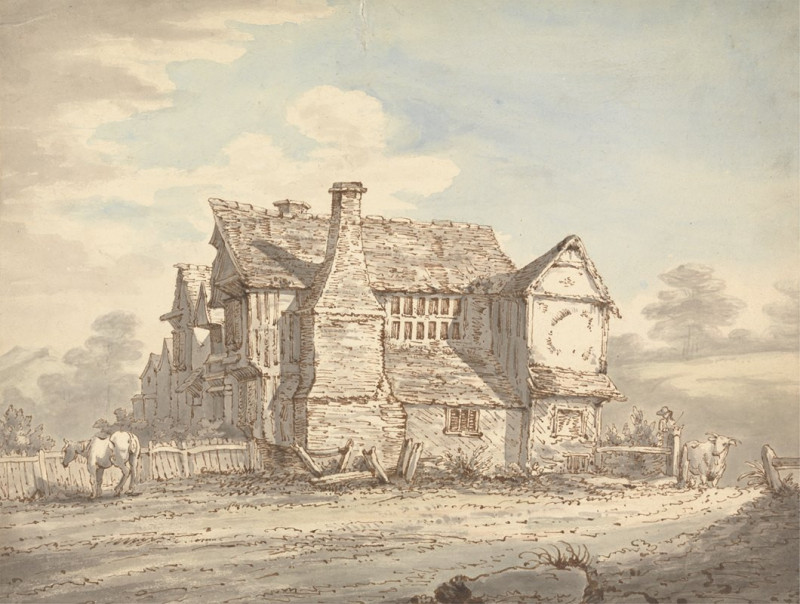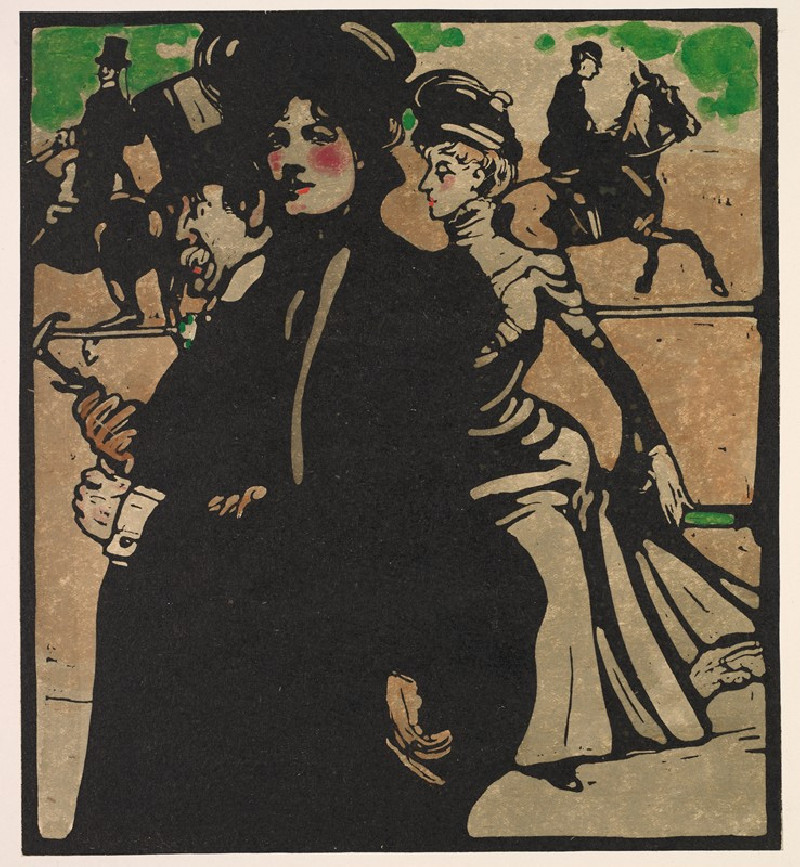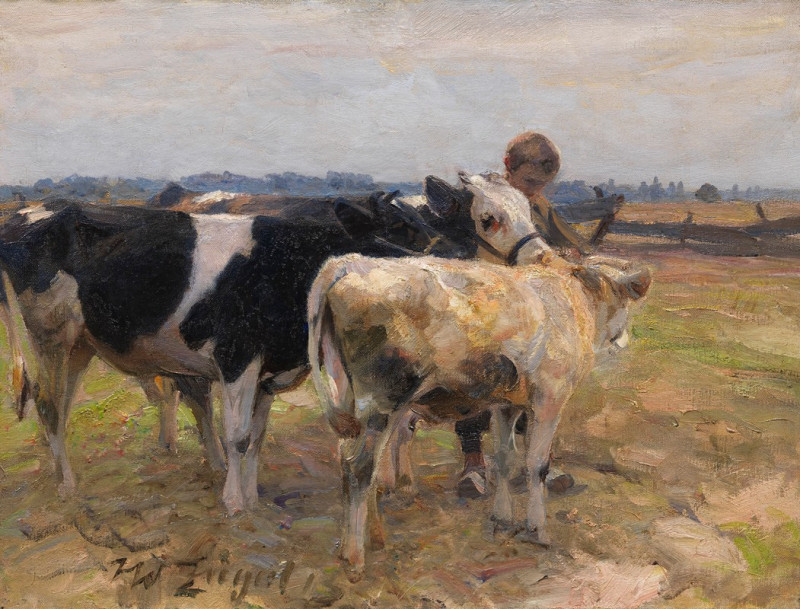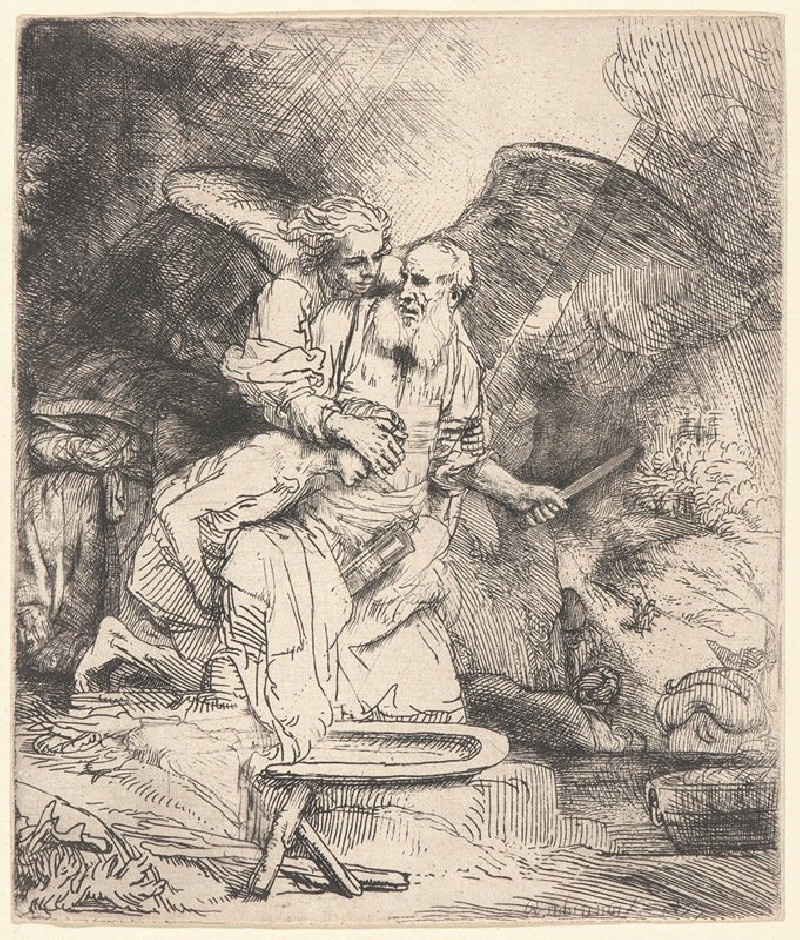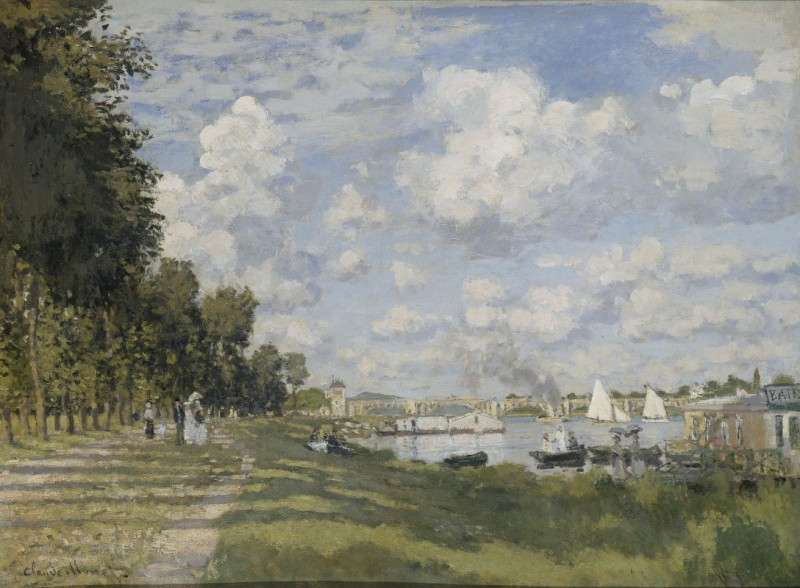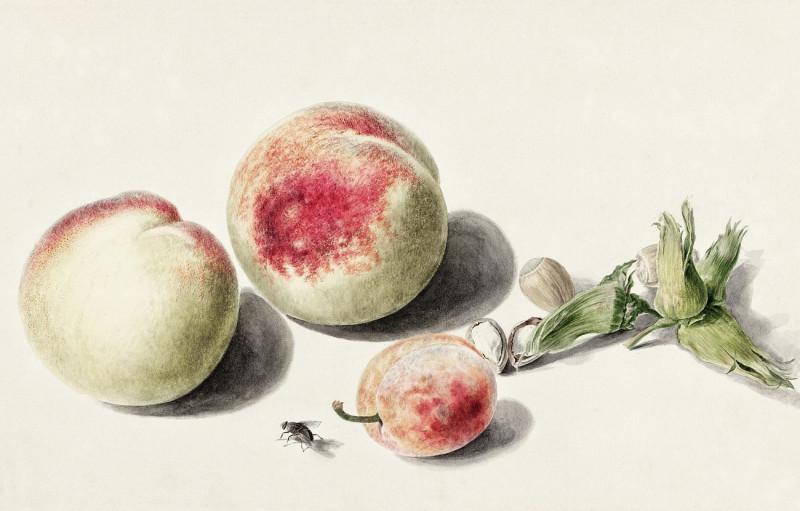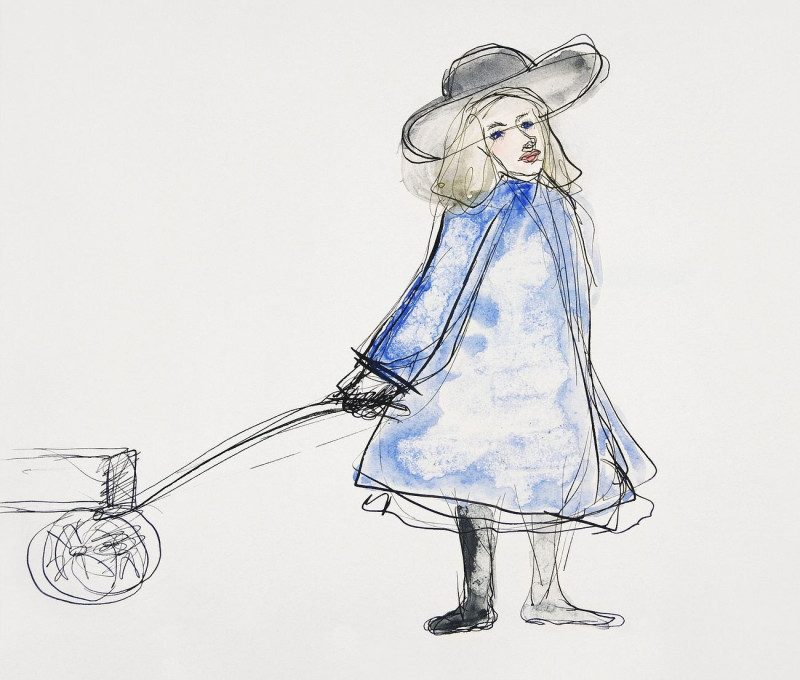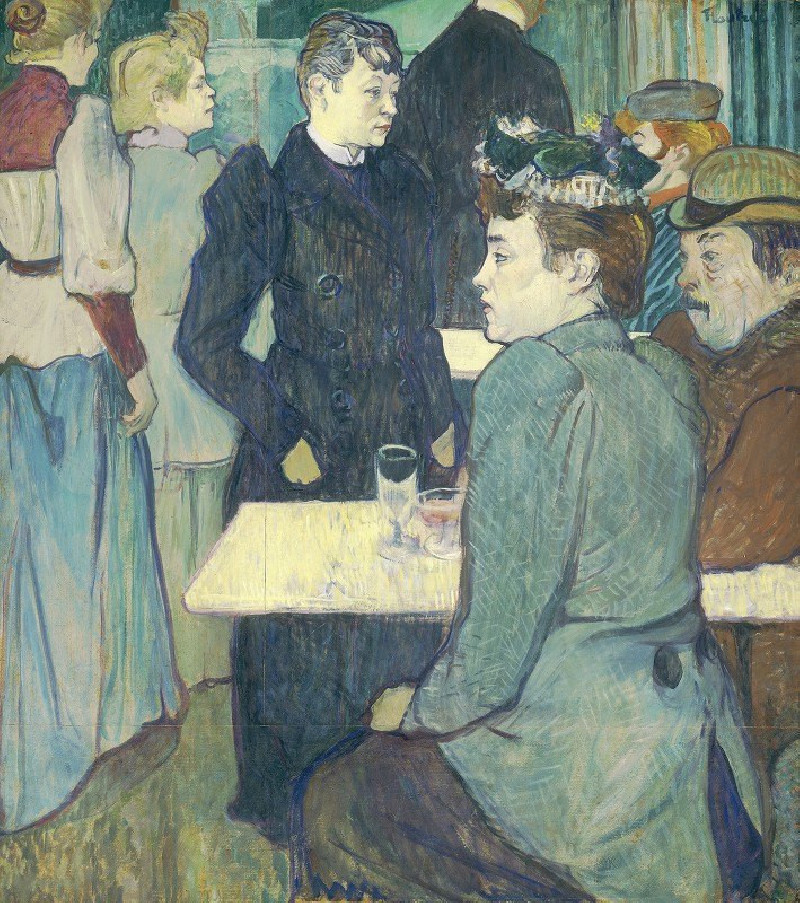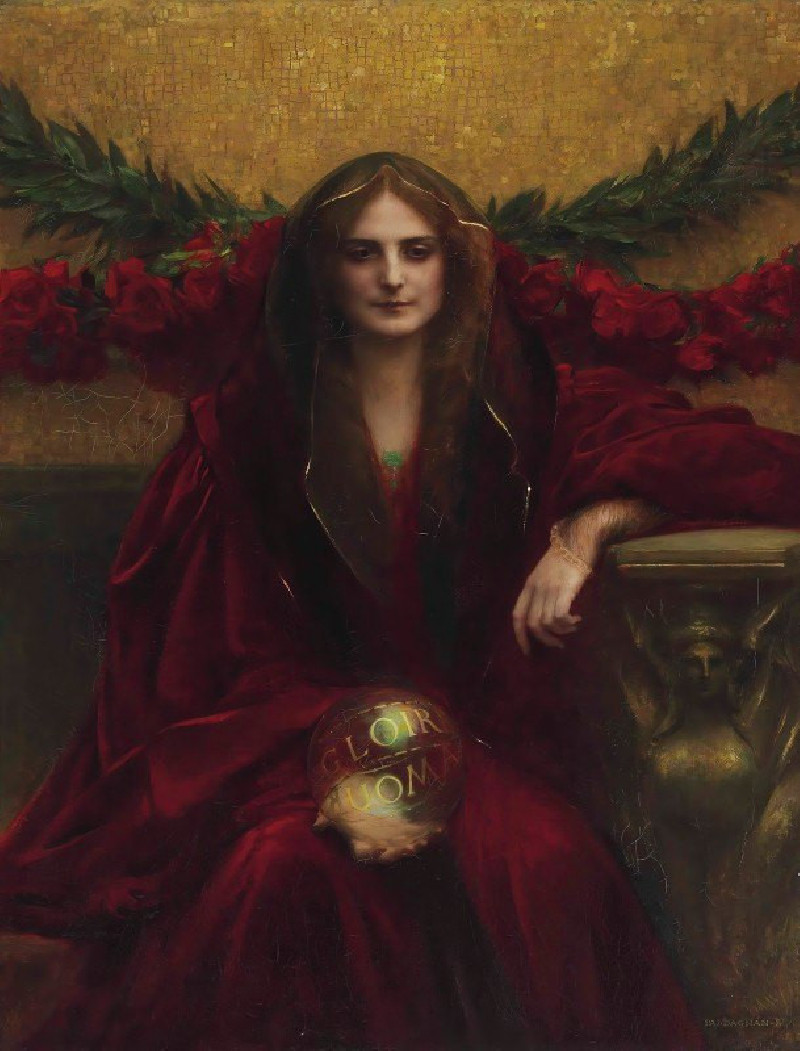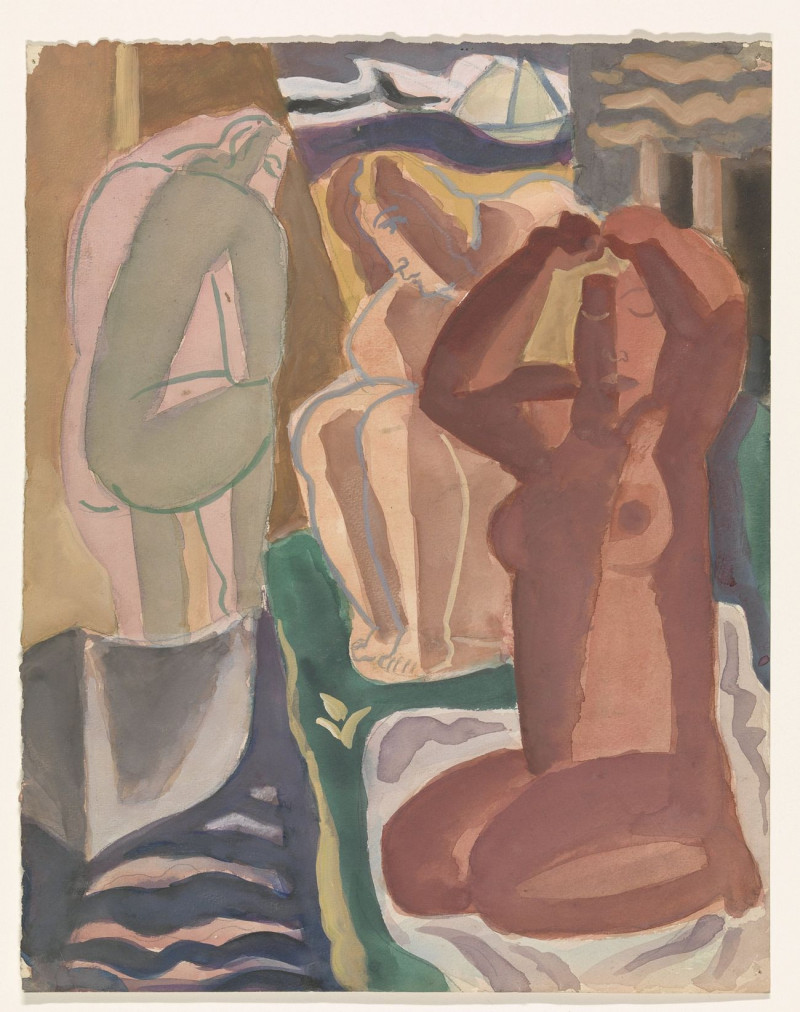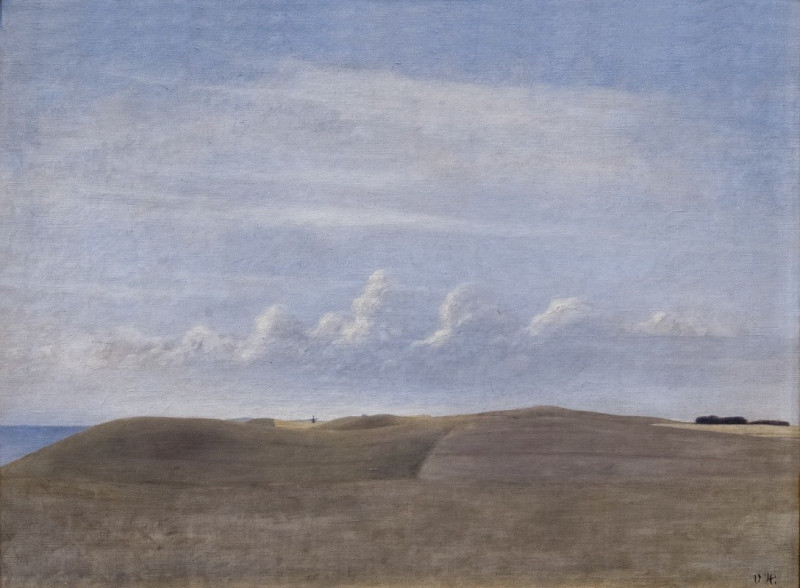Palace of Patterdale
Technique: Giclée quality print
Recommended by our customers
More about this artwork
Joseph Farington's evocative watercolor titled "Palace of Patterdale" captivates the viewer with its meticulous depiction of a rustic estate nestled in the verdant embrace of the English countryside. This painting showcases Farington's exceptional skill in portraying the tranquil beauty of nature intertwined with human habitation.At the heart of the piece is an elegantly designed manor house, characterized by its traditional stone architecture and towering chimneys, suggesting a dwelling that is both prominent and historically rich. The manor sits under the protective shadow of a formidable mountain backdrop, enhancing the sense of isolation and the wild, untouched allure of the landscape.Adding vibrancy to the composition, Farington places a lone pine tree prominently in the foreground, serving as a testament to resilience against a pale sky. The surrounding foliage in varying shades of green creates a soft contrast with the soft earth tones of the manor, invoking a peaceful harmony with nature.On the lower left, Farington cleverly introduces a group of villagers, lending scale and life to the scene. These figures, with their period attire, are depicted strolling leisurely, possibly villagers or travelers, which injects a narrative element into the tranquil setting."Palace of Patterdale" is not just a visual treat; it is a window into a timeless England, captured with a palette that speaks softly of the gentle interplay between man and nature. This painting is an exquisite example of Farington’s ability to document the scenic allure of the English landscapes while telling a story that invites the audience to step back in time.
Delivery
Returns
Joseph Farington RA was an 18th-century English landscape painter and diarist.
Born in Leigh, Lancashire, Farington was the second of seven sons of William Farington and Esther Gilbody. His father was the rector of Warrington and vicar of Leigh. Three of his brothers—William, Henry, and Richard—were "employed in the naval service of the East India Company". Edward died of yellow fever when he was 32. Robert attended Brasenose College and became vicar of St George in the East, London (whose advowson was held by Brasenose). George Farington became a painter, like Joseph himself.

